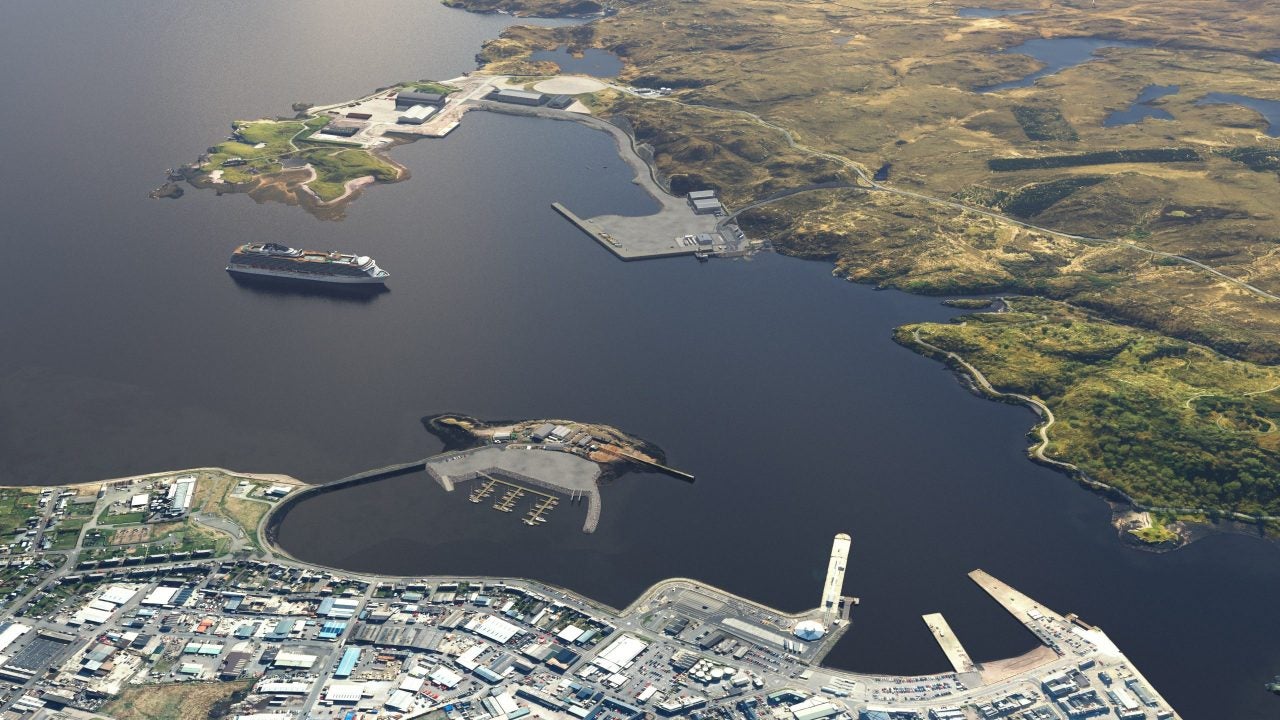
Tourism in Scotland is set to receive a massive boost after plans were announced to build a deep water terminal at the port of Stornoway, large enough to accommodate all but the biggest of cruise ships.
A flotilla of small transfer boats currently transport passengers to-and-from vessels over 510ft (156m), because larger ships are unable to berth at Stornoway. But thanks to a £49million investment, work is set to get underway to create a deep water terminal to service the popular tourist destination island.
The new terminal will allow vessels up to 1,180ft (360m) long to berth at the port, inviting cruise operators to sail to the Scottish islands, as it will be able to handle all but the world’s largest cruise ships.
Set for completion in May 2023, the terminal will be the only deep water berth on Scotland’s west coast north of Greenock, some 170mi (270km) away.
The cruise industry has been desperate for a large west coast cruise berth for many years,” Stornoway Port Authority (SPA) chief executive Alex MacLeod says. “As we start to come out of the Covid-19 pandemic, the completion of the project will be an excellent enabler for the recovery of the cruise industry.”
Visit the Outer Hebrides
The new deep water terminal will provide a stopping point for cruise operators heading north on voyages to popular destinations such as Iceland or the Faroe Islands. The new terminal at Stornoway will also offer a good stop for UK routes, offering an overnight sail between Kirkwall, Invergordon, Belfast, and Glasgow.
“The cruise industry is particularly interested in the Hebrides as our location is ideal for many cruise itineraries,” MacLeod explains.
Stornoway, the Hebrides’ largest town, is located on the isle of Lewis and Harris, which offers “historical significance and natural beauty”, Macleod says.
With its unique Gaelic culture, which blends the area’s Viking and Celtic past, there will be plenty for visitors to see and do. Guests will be able to visit the 5,000-year-old Callanish Stones, used as part of Bronze Age rituals, tour an Iron Age village on Great Bernera, to the west of Stornoway, and visit Lews Castle, home to the famed Lewis chessmen.
Supported by a number of cycle routes and bike hire schemes, visitors will be able to venture outside of the historic town and explore everything that Lewis and Harris has to offer.
Supporting the Stornoway community
Experts reckon that the deep water terminal could see an additional 35 to 40 passenger vessels pass through Stornoway each year, but no estimate has been provided for how many additional passengers this could bring to Stornoway from 2023.
However, with many of the world’s largest vessels offering a capacity upwards of 5,000 guests, the development has the potential to significantly boost the 220,000 visitors that currently visit the Hebrides each year.
“Following completion of the deep water terminal, SPA is confident we will see a significant increase in cruise passenger numbers in the coming years,” Macleod insists. “The development will allow larger cruise ship vessels to berth alongside, which means there will be more passengers than ever before passing through the terminal and on to the wider island tourism locations.”
An influx in visitors would undoubtedly provide a boost to Stornoway and the surrounding islands, which rely considerably on tourism to fuel their economies. According to the Scottish government, tourism in the Hebrides is estimated to generate £65m each year, supporting more than 1,000 jobs and hundreds of hotels, bed and breakfasts, and other businesses.
The deep water terminal is expected to provide an additional 200 jobs to Stornoway’s population of 5,000, as well as additional revenue for local businesses that will profit from an increase in the number of visitors.
“There are huge opportunities for local businesses to provide our visitors with products and services that enhance the visitor experience and to sample a taste of island life and the Gaelic culture,” Macleod explains. “Local businesses will benefit from tourist spend, and the project will be an integral part of the long-term sustainability of the islands.”
Challenges to consider
Accommodating large cruise ships can often come at a cost for the areas that welcome them, and the industry often comes under fire for having a considerable environmental impact.
Stornoway Port Authority has undertaken ‘extensive’ environmental studies through the Environmental Impact Assessment and consenting process to consider any impact that the development will have on locals, wildlife and habitats, as well as potential noise, air, and marine pollution caused by the port’s growth and the increase in traffic.
While the environmental impact report did identify some potential adverse effects, these were largely related to the visual impact of the construction work and development. However, the report also highlighted the significant job creation that the development offers, which will lead to a “reduction in depopulation and aging population issues” on the island.
For the locals, the positives appear to outweigh any potential negatives. Before the creation of the port masterplan, the port authority undertook extensive consultations to assess local sentiment, and insists that the island’s community remains “very supportive” of the deep water terminal development.
Rather than challenges around the redevelopment of the port, the main concern for SPA and the wider Stornoway community is ensuring that the surrounding infrastructure is in place to cope with an expected influx in visitors to the island.
To prepare itself, the community will look to alternative destinations that have successfully navigated increased passenger numbers to ensure the development benefits cruise operators, passengers, and the local community.
“The Port Authority is working with other public agencies to ensure that the community is prepared for an increase in passenger numbers following completion of the project,” Macleod says. “Over the coming years we will make sure plans are in place to ensure a successful outcome from both cruise passengers and the local community.”



